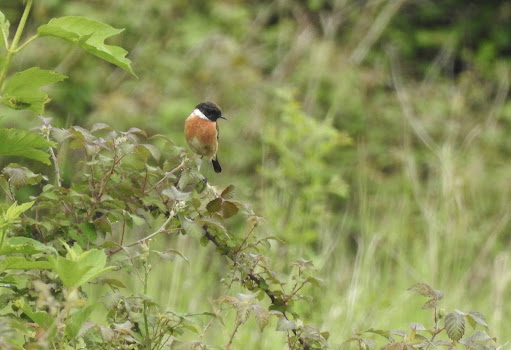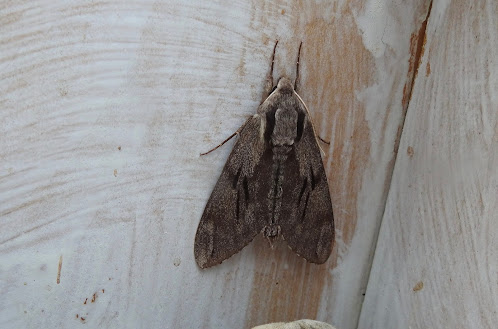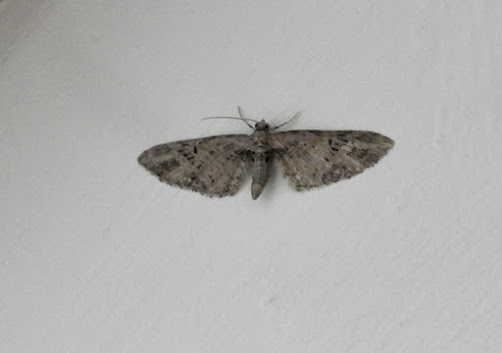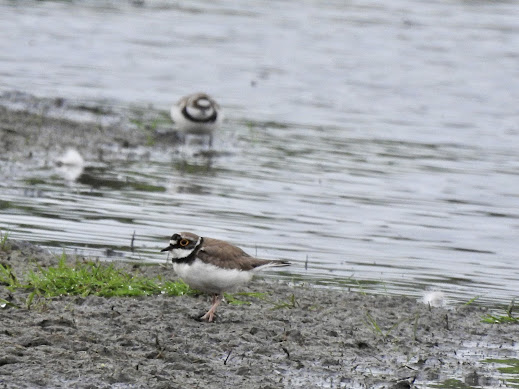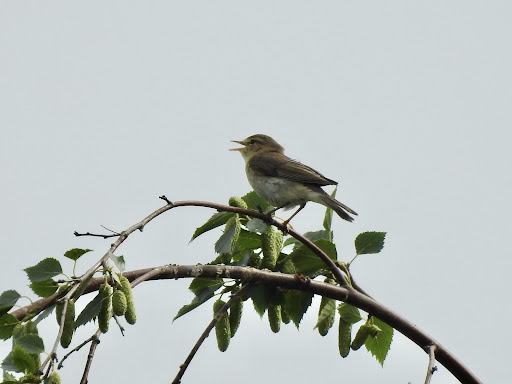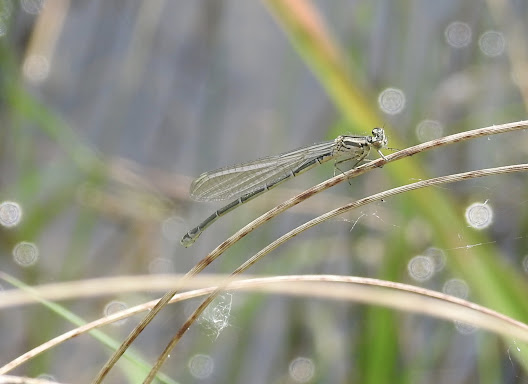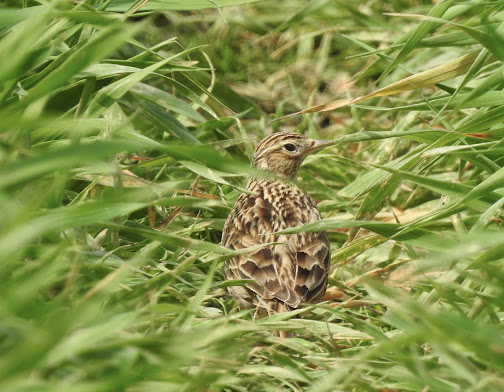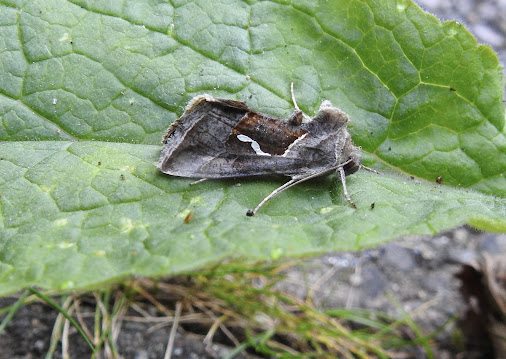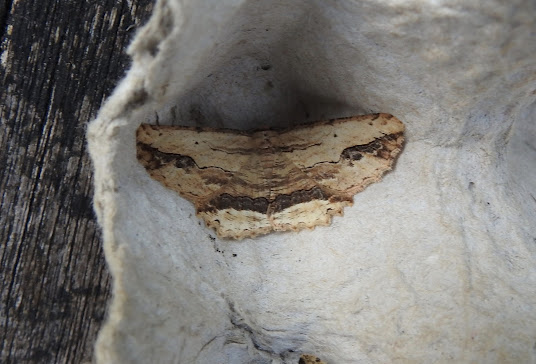I've been to Morton Bagot twice this week. The first time was on Wednesday with Linda and Mike. It was rather a shortened walk across a very damp site. We had good views of a pair of Stonechats and two Little Egrets before watching the local House Martins collecting mud.
We did slightly better for butterflies, seeing my first Common Blues and Meadow Brown of the year, and also the moths Burnet Companion, and Agapeta hamana.
 |
| Female Common Blue |
It's probably fair to say that insects were not Mike and Linda's bag, so it's probably just as well I was on my own this morning.
Obviously I was hoping to see a few birds, and I certainly found a fellow birder. Tony was on site hoping to ring the Stonechats, and I gather he had some good views of the inquisitive male before giving up and going home to make adjustments to his catching mechanism.
Meanwhile I ploughed my own furrow, heading off to see what else I could find. There was not much that was new, although I did count four singing Reed Warblers (three in the reedbed at the Dragonfly Pool, and one in the bulrushes of the scrape field), and at least five Reed Buntings including a pair which were clearly feeding young.
 |
| Female Reed Bunting with a beak full of flies |
My main focus gradually shifted to insects. New moths for the year were four Yellow Shells, a Pea Moth Cydia nigricana, and my first Spectacle for Morton Bagot. This is a moth I catch every year in the garden, but I'd never seen one actively feeding on flowers in the daylight before.
 |
| Spectacle fluttering on a flower (Dog-rose?) |
As I ambled back, my progress got slower and slower as I became captivated by the sheer abundance of insects in the hedgerows and particularly on umbellifers such as Hogweed.
 |
| At least seven or eight species on this plant |
The image above contains at least: Batman Hoverfly, several Longhorn Beetles of the genus Grammoptera, I think they were G ruficornis, three Greenbottles Lucilia ag, a Flesh Fly Sarcophaga ag, a Flavous Nomad Bee Nomada flava, a Yellow Dung Fly, and an Ichneumon Wasp (unidentifiable).
And the thing was, every umbellifer I looked at was similarly jam-packed with insects. Since I've got home I've spent several hours going through my photos to see what I could identify. Successes include:
 |
| Chloromyia formosa (A Fly) |
 |
| Chrysophilus cristatus (A Snipe Fly) |
 |
| Volucella bombylans (a bee mimic hoverfly) - The big one on the right |
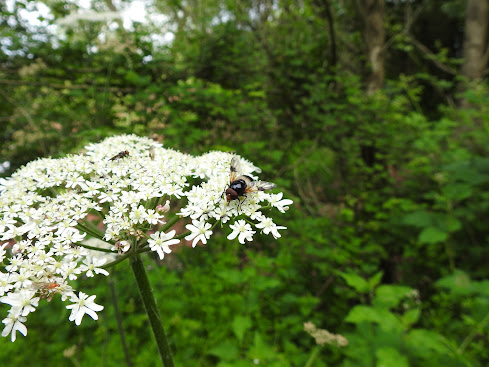 |
| Volucella pelucens (another Bee mimic hoverfly) - on the right |
There were also some extraordinary insects which turned out to be unidentifiable from photographs. The most impressive of these was an Ichneumon Wasp which might well have been Buathra laborator, but apparently other species are so similar that a microscope and a specimen are required.
.jpeg) |
| Ichneumon Wasp (possibly Buathra laborator) |
I could go on, but I think it's time to call a halt.
The main point is that staring into the vegetation in the summer can be absolutely fascinating even if it is impossible to identify many of the species encountered. It can save any birdless day.
%3F.jpeg)
%3F.jpeg)

